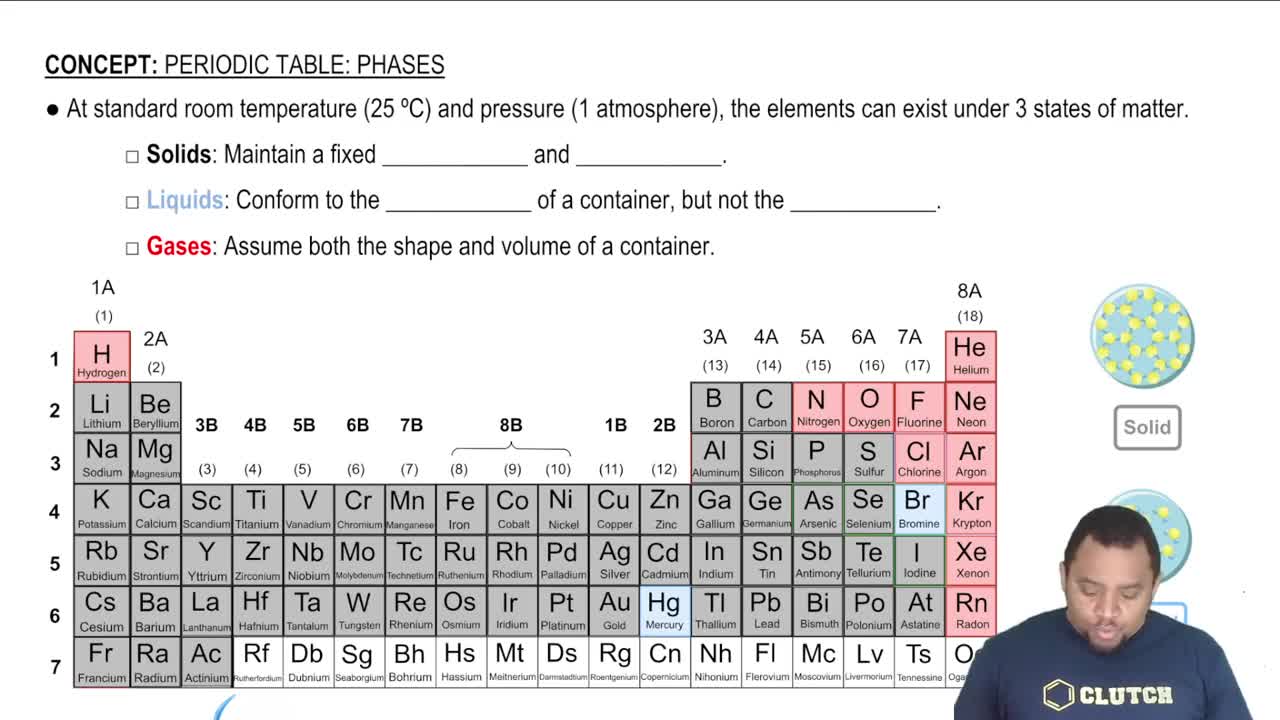Write 'true' or 'false' for each statement. (b) If the reaction 2 O3(g) → 3 O2(g) goes to completion and all O3 is converted to O2, then the mass of O3 at the beginning of the reaction must be the same as the mass of O2 at the end of the reaction.
Ch.3 - Chemical Reactions and Reaction Stoichiometry
Chapter 3, Problem 12b
Balance the following equations: b. TiCl4(𝑙)+H2O(𝑙)⟶TiO2(𝑠)+HCl(𝑎𝑞)
 Verified step by step guidance
Verified step by step guidance1
Identify the number of each type of atom on both sides of the equation: Ti, Cl, H, and O.
Start by balancing the titanium (Ti) atoms. There is 1 Ti atom on each side, so they are already balanced.
Next, balance the chlorine (Cl) atoms. There are 4 Cl atoms in TiCl4, so you need 4 HCl molecules on the product side to balance the Cl atoms.
Now, balance the hydrogen (H) atoms. You have 4 H atoms in 4 HCl, so you need 2 H2O molecules on the reactant side to provide 4 H atoms.
Finally, balance the oxygen (O) atoms. You have 2 O atoms in 2 H2O and 2 O atoms in TiO2, so they are balanced.

Verified video answer for a similar problem:
This video solution was recommended by our tutors as helpful for the problem above.
Video duration:
1mWas this helpful?
Key Concepts
Here are the essential concepts you must grasp in order to answer the question correctly.
Balancing Chemical Equations
Balancing chemical equations involves ensuring that the number of atoms for each element is the same on both sides of the equation. This is based on the law of conservation of mass, which states that matter cannot be created or destroyed in a chemical reaction. To balance an equation, coefficients are adjusted in front of the chemical formulas to achieve equal atom counts.
Recommended video:
Guided course

Balancing Chemical Equations
States of Matter
In chemical equations, the states of matter are indicated by symbols: (s) for solid, (l) for liquid, (g) for gas, and (aq) for aqueous solutions. Understanding these states is crucial for interpreting the physical forms of reactants and products, which can influence reaction conditions and outcomes. For example, TiCl4 is a liquid, while TiO2 is a solid.
Recommended video:
Guided course

Element States of Matter
Stoichiometry
Stoichiometry is the calculation of reactants and products in chemical reactions based on balanced equations. It allows chemists to predict the amounts of substances consumed and produced in a reaction. In the context of the given equation, stoichiometry will help determine the correct coefficients needed to balance the equation while maintaining the correct ratios of reactants to products.
Recommended video:
Guided course

Stoichiometry Concept
Related Practice
Textbook Question
1
views
Textbook Question
A key step in balancing chemical equations is correctly identifying the formulas of the reactants and products. For example, consider the reaction between calcium oxide, CaO(s), and H2O1l2 to form aqueous calcium hydroxide. (b) Is it possible to balance the equation if you incorrectly identify the product as CaOH1aq2, and if so, what is the equation?
Textbook Question
Balance the following equations: c. CH4(𝑔)+Cl2(𝑔)⟶CCl4(𝑙)+HCl(𝑔)
Textbook Question
Balance the following equations: c. NH4NO3(𝑠)⟶N2(𝑔)+O2(𝑔)+H2O(𝑔)
Textbook Question
Balance the following equations: d. AlCl3(𝑠)+Ca3N2(𝑠)⟶AlN(𝑠)+CaCl2(𝑠)
Textbook Question
Balance the following equations: b. C5H10O2(𝑙)+O2(𝑔)⟶CO2(𝑔)+H2O(𝑔)
